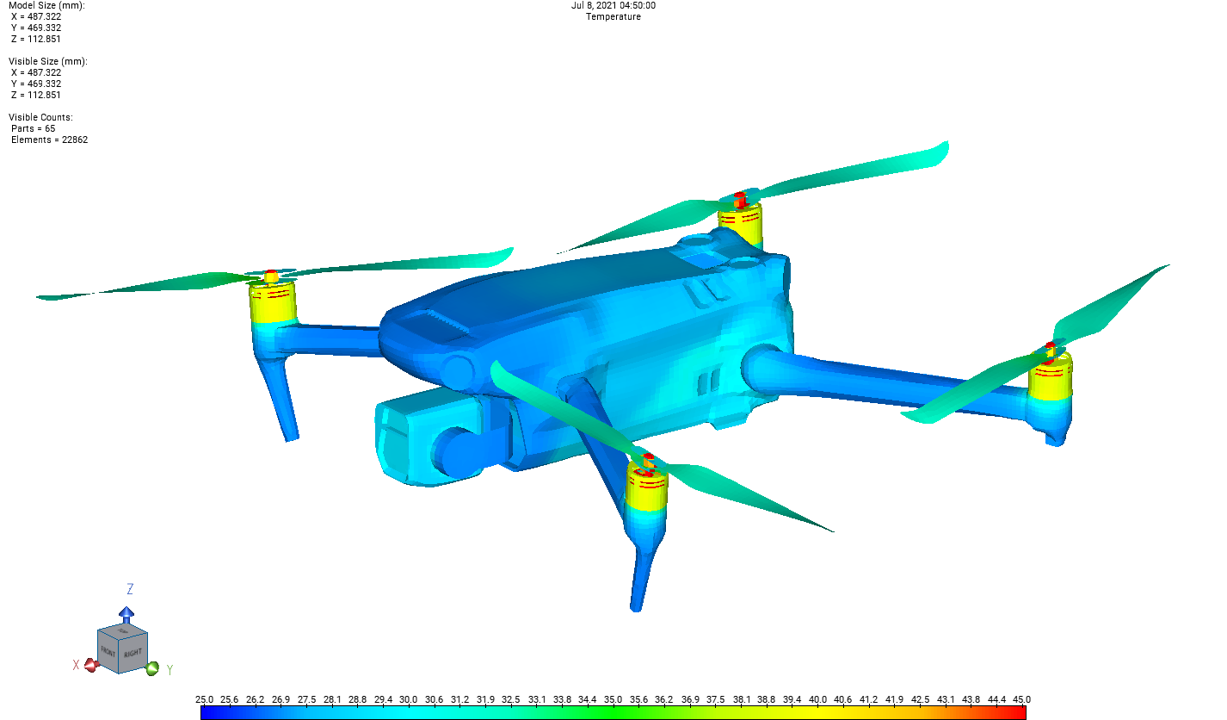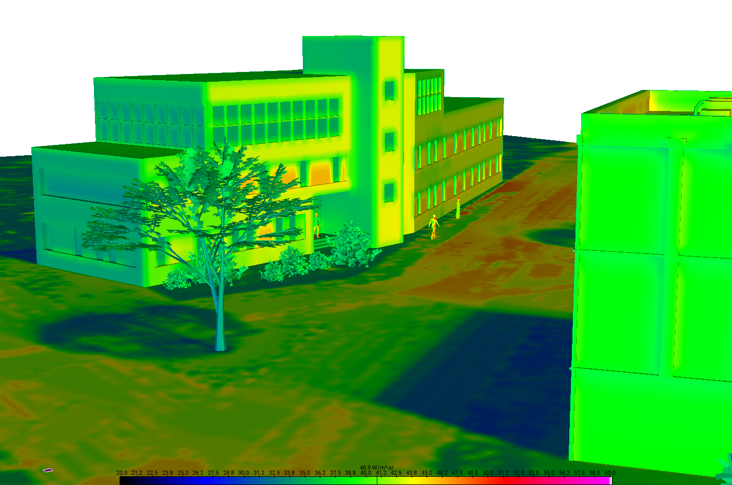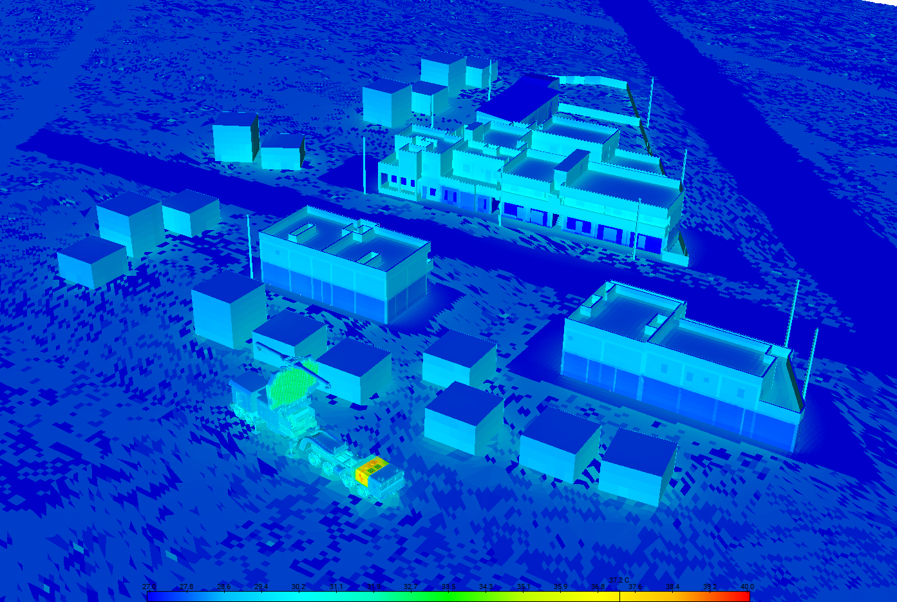An Introduction to MuSES and Scene Simulation for AI/ML Applications
Thursday, August 21, 2025 | 9:00 - 10:00 AM ET

Join us for an insightful webinar exploring the cutting-edge scene simulation capabilities of MuSES (Multi-Service Electro-Optic Signature) and the transformative potential of AI/ML for defense applications.
Training robust machine learning algorithms for defense applications often requires vast amounts of accurately labeled real-world data, which can be expensive and time-consuming to obtain, especially for non-visible wavebands. Synthetic imagery offers a powerful and appropriate alternative for generating sufficiently large and diverse image datasets for training purposes.
In this session, you'll discover how MuSES provides unparalleled accuracy in simulating ground vehicles, manned and autonomous fixed-wing and rotary aircraft, watercraft, human personnel and other high-fidelity targets in realistic operational environments. We'll walk through its powerful features for:
- Realistic Environmental Modeling: Accurately simulate battlefield conditions, including solar loading, atmospheric effects, and terrain interaction.
- Detailed Thermal-Electrical Modeling: Incorporate electronic heat sources, coupled battery and photovoltaic power systems, phase change materials and other sophisticated target details.
- Human Modeling: Include thermoregulating humans with realistic poses and clothing into scenes.
- Signature Management: Explore the impact of optical surface properties and thermal management systems on the detectability of targets in cluttered scenes.
- Automatic Target Detection/Recognition: Investigate the ability to detect and recognize embedded targets in cluttered scenes and rigorously study how the effectiveness of trained AI/ML algorithms is impacted by variables of interest.
We'll explore how to integrate AI/ML techniques with MuSES by synthetically creating large sets of training data with the desired level of detail/resolution and variation. An extensive database of 3D target models exists (including ground vehicles, maritime vessels, aircraft, human personnel, etc.) with accurate geometric features, optical surface properties, and internal heat sources (e.g., engine, exhaust, and electronics). Learn how these target models can be combined with background scenes to:
- Rapidly evaluate numerous operational scenarios with automated simulation processes.
- Streamline data processing and extract critical insights from complex simulation results.
- Determine how best to exploit adversarial signatures or minimize cooperative target detection.
Who Should Attend:
This webinar series is ideal for defense engineers, researchers, data science, image analysts, and program managers involved in:
- Intelligence, surveillance, target acquisition, and reconnaissance (ISTAR) efforts
- Vehicle system development and evaluation
- Soldier vulnerability and mission planning
- Search and rescue operations
- Automated security applications
Presenters
Eli Datema
Thermal/CFD Engineer
 | Eli Datema is a Thermal/CFD Engineer at ThermoAnalytics, Inc., where he develops thermal and EO/IR models for defense and commercial applications using TAITherm, MuSES, and CoTherm. Based in the Calumet office, Eli specializes in creating high-fidelity scene simulations that support a range of use cases, including AI/ML algorithm development. He began his career at ThermoAnalytics as an intern in 2020 and joined full-time in 2021 after earning his B.S. in Mechanical Engineering from Michigan Technological University. |
Jacob Hendrickson
Thermal/CFD Engineer
 | Jacob Hendrickson is a Thermal/CFD Engineer at ThermoAnalytics, Inc., where he focuses on thermal and infrared modeling for both commercial and defense applications. He has extensive experience in full vehicle thermal validation, EO/IR scene simulation, and synthetic environment creation using MuSES, including texture mapping, terrain classification, and realistic material assignment. Jacob also supports AI/ML development through the generation of accurate scene data and target representations, and has contributed to human thermal modeling through the creation of manikin models and a novel infant physiology. He joined ThermoAnalytics in 2020 and holds a B.S. in Mechanical Engineering and an M.B.A. from Michigan Technological University.< |
Register for the Webinar
Other Webinars in this Series
Enhancing UAV Detection in Thermal Infrared with Synthetic Data and Deep Learning Webinar

Thursday, September 4, 2025 | 9:00-10:00 AM EDT
Join us for a technical webinar exploring how synthetic thermal infrared imagery can dramatically improve deep learning performance for detecting and recognizing unmanned aerial vehicles (UAVs).
Unlock Advanced Human Detection with Multimodal Remote Sensing & Thermal Modeling in MuSES Webinar

Thursday, October 9, 2025 | 9:00-10:00 AM EDT
Join us for an exclusive webinar exploring the cutting-edge integration of multimodal remote sensing data and human thermal modeling within MuSES — the premier simulation environment for realistic battlefield and security scenarios within the infrared (IR) spectrum.
OPIR Surveillance: Synthetic IR Imagery and Deep Learning for Overhead Target Detection Webinar

Thursday, February 5, 2026 | 9:00-10:00 AM EDT
Join us for an in-depth webinar on the technical challenges of Overhead Persistent Infrared (OPIR) surveillance and how synthetic imagery is enhancing deep learning performance for detecting ground-based targets from space-based platforms.